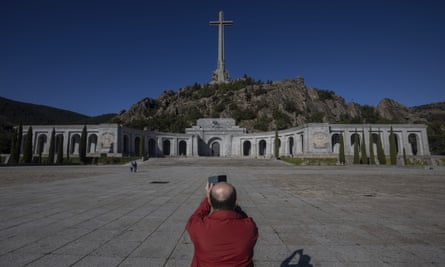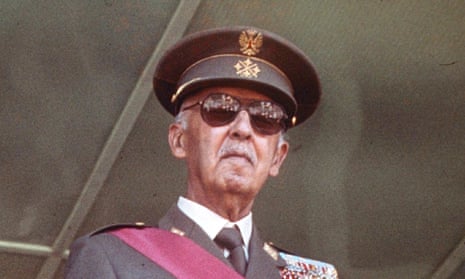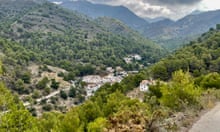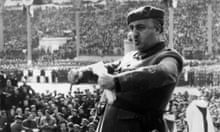The remains of the Spanish dictator Francisco Franco are to be moved from the state mausoleum in which he was buried to a municipal cemetery to lie alongside his wife, after the country’s supreme court ruled in favour of exhuming his body.
The ruling on Tuesday is likely to be the final chapter after decades of controversy over Franco’s burial place. Removing his body from its tomb in the Valley of the Fallen memorial near Madrid, where he was placed after his death in 1975, has been a priority of the Spanish Socialist Workers’ party (PSOE) since it came to power in June last year.
Carmen Calvo, Spain’s acting vice-president, said the government would proceed with the exhumation as soon as possible. “This is good news for the Spanish people, out of respect for the victims on both sides, so that our coexistence can be fully free and ethical.”
The party has argued that the basilica and its 150 metre-high (490ft) cross are a monument to the Franco regime that glorifies the winners of the civil war rather than commemorating its victims. The prime minister and PSOE leader, Pedro Sánchez, has said the move is necessary to heal the wounds of the war.
However, so far the dispute has provided a rallying point for Spain’s resurgent right in a country that has never managed to achieve closure over the war.
The six judges unanimously rejected the Franco family’s demand that his remains be moved to the Almudena Cathedral in Madrid and he will now be interred in the Mingorrubio municipal cemetery at El Pardo outside Madrid, where his wife Carmen Polo is buried.
Franco’s family had appealed both against exhuming his remains and against the plans to move them to El Pardo. Were his remains to be moved, they wanted them to go to Almudena, adjacent to the Royal Palace in central Madrid, to lie alongside his daughter.
A government report said last December that the cathedral was unsuitable as a burial place for security reasons.
Franco, who ruled Spain from his victory in the 1936-39 civil war until his death, remains a contentious political touchstone in Spain.
Sánchez will hope that the exhumation can be completed before the country’s general election on 10 November. Whether the move will galvanise a weary electorate as it goes to the polls for the fourth time in as many years remains to be seen.
If, as seems likely, Spain’s newly confident far right reacts to the court’s decision, this could help mobilise apathetic PSOE voters.
Reacting to the news, Santiago Abascal, the leader of the far-right Vox party, tweeted: “This is how the socialist campaign begins, profaning tombs, digging up hatreds, questioning the legitimacy of the monarchy. Vox alone has the courage to defend freedom and common sense in the face of totalitarianism.”
The Socialists have long sought to turn the Valley of the Fallen complex into a memorial to victims of the civil war, during which about 500,000 people died.
Nearly 34,000 dead are buried there, including many who fought for the losing republican side and whose bodies were transferred to the site during Franco’s dictatorship without the permission of families.

Chato Galante, who was imprisoned and tortured under the Franco regime in the early 1970s, welcomed the court’s ruling.
“It’s a huge satisfaction for all those working for the recovery of historical memory that he’s coming out of the Valley of the Fallen,” he said. But Galante said the decision was only a first step and that Franco’s body should be only the first of all the bodies to come out of the huge monument, where thousands of victims lie buried in what is a vast unmarked grave.
“This isn’t the end of the process,” he said. “We now need to get out the bodies of all the loved ones who were locked in there and give them a decent burial. We also need to see a judicial resolution formally condemning Franco’s criminal regime.”
From the outset, plans to move Franco’s remains have been bitterly opposed by the dictator’s family and supporters. Juan Chicharro Ortega, the president of the Francisco Franco National Foundation, has said the group will carry on supporting the family and appeal to the constitutional court and, if necessary, to the European court of human rights.
However, Ortega also said he did not believe the dictator had ever wanted to be buried in the Valley of the Fallen and would have preferred to be interred in his hometown of Ferrol or in the family mausoleum. “Looking back on it now, I think it was a mistake to bury him there, he said last week.
The Association for the Recovery of Historical Memory, which represents victims of the Franco regime, is opposed to the dictator being buried in El Pardo as the cemetery is maintained at the taxpayers’ expense.









